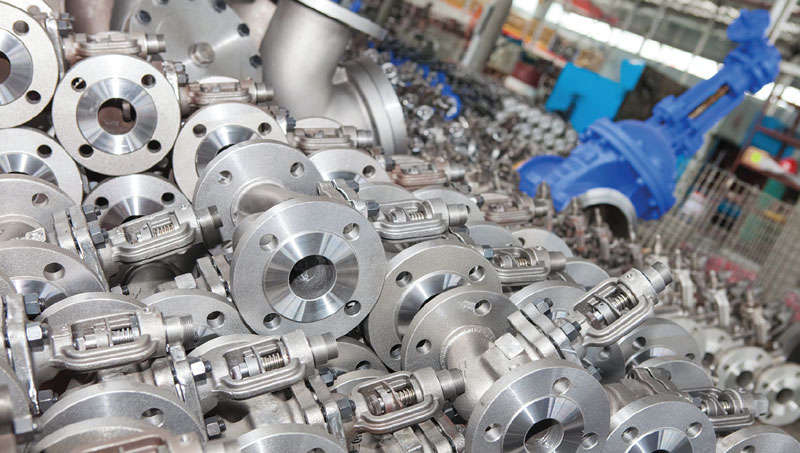How does asset management increase a valve’s useful life?
By Mr. Alireza Aslarabi Sardroudi
When properly applied, asset management can be an incredibly powerful tool in obtaining the very best performance and longevity from equipment used in the process industries. Mr. Alireza Aslarabi Sardroudi has kindly agreed to prepare a series of articles outlining all the important steps towards implementation of an asset management program for valves.

Today, the topic of asset management can be seen in all areas, businesses and industries. Since 2008 when the UK Institute for Asset Management (IAM) introduced the developed PAS55 standard to the world, the issue of maintenance has shifted to the issue of asset management. This move was completed in 2014 with the publication of the international Series standard ISO55000 (and later 55001, 55002). Both standards challenge organizations around the four main axes, namely efficiency, risk, cost and empowerment of the organization to achieve comprehensive management of physical assets. These patterns were first considered at the level of leading industries such as oil and energy industry, automobile, and steel. However, due to (i) the large volume of physical assets such as infrastructure, including roads, public buildings, ports and hospitals, schools, hotels, and (ii) the effectiveness of this management, we can see that today asset management is mandatory and extensively used in service centers and industries, be they governmental or privately owned. But the main goal of this management in all physical assets is to get the maximum value from the assets and in this regard to systematically coordinate all activities to the maximum value, this value can be maximum production or service, fast return on investment, low life cycle cost, reduc-tion of safety hazards or all of these together. So basically we need to be able to define a value for each asset that we want to achieve, then find relevant core activities to achieve that value that can be efficiency (production or service), risks (safety and environment), and cost (life cycle). Then activate and align them.
In this article, we try to review how the above-mentioned issue is realized for industrial valves, which have an effective role in industries and infrastructures due to their number, variety and wide application.
Valves are very important in industry and infrastructure
Valves seem to be one of the first human inven-tions to reach today’s industry; wherever there is talk of a fluid, whether liquid, solid or gas, you see dozens or hundreds of valves that are supposed to control these fluids. Either manually or automatically and intelligently.
Valves have a large number and variety, some are very important and expensive because of their composition, and some are important and expensive because of their size. Valves go through a complex process from being determined by the end user, designed by engineers, and manufactured and tested in the factory. In this way, an initial value is produced, which is mainly economic. But the main value of valves appears when operat-ing them. This value corresponds to the core value of creating an industry or infrastructure. That is, if the valve
is not used, only the economic value is equal to its purchase cost (15% of the real value). But when we use a valve, its core value, which is the control of liquids for production or service, is revealed, which is more than 80% of its true value.
In addition, valves contain materials that can be returned to the valve regeneration cycle at the time of scrapping or removal, which is also valuable (less than 5% of the actual value).
So valves are valuable to us throughout their life cycle from the time they are built and installed, operated and maintained and removed, and that value dictates that we find a model of asset management for them.
The classic asset management model (ISO55001) tells us that you need to design a system that addresses the following seven issues:
• The context of the organization that determines the type of activity and area of business and the need for assets.
• A leader who determines how to manage and manage assets
• Planning that specifies how and when to plan the life cycle of assets
• Support that indicates the creation or provision of infrastructure and arrangements necessary for the implementation of programs.
• Operations that track and execute programs.
• Performance appraisal that evaluates and levels the ef-fectiveness of assets from the results of operations and compliance with plans.
• Continuous improvement, which according to the evaluation results suggests the necessary improvements in leadership, planning, support and operations.
Based on my thirty years of experience in the industry and the published documents on asset management, I must say that these documents state the implementation requirements in the best conditions but do not address how to implement them. That is, each organization, according to its context and the diversity and number of assets, should develop a system according to the above requirements, which is usually specific to that organization or industry and cannot be extended to other organizations and industries.
So we have to think of three organizational groups and separate them in order to achieve asset management in the valve industry. The first group is the manufacturers, who construct valves in the factory. The second group is engineering design, procurement and construction (EPC) companies that design purchase and install equipment based on a requested main process, and the third group is the industries that use assets as owners or operators. In this group of valve users, the main value of the valve is obtained because they have a longer life time of the valve life cycle.
To be continued…..
 About the author
About the author
Mr. Alireza Aslarabi Sardroudi is an expert In physical asset management. Based in Tehran, Iran, Mr. Sardroudi can be reached on: aslearabi@yahoo.com
Mr. Sardroudi has planned seven articles about asset management of valves, as follows:
1: Introduction and overview
2: Requirements of an asset management system for valves
3: Asset management plan for the manufacture of valves
4: Asset management plan for engineering, design and installation
5: Asset management plan for valves during operation
6: Asset management plan for decommissioning valves
7: Valve asset management assessment and auditing


